TexasKnucklehead
Jedi Knight
Offline
I often find myself in the fast lane. I don't feel like I am a 'fast' driver, but I recently drove over 300 miles in 5 hours, including a short visit in the left of the fast lane, where I waited with the hood open. I was making pretty good time and trying to get through Dallas before the Friday afternoon rush hour. Without a clue, the normal traffic flow went from 75mph+ to 0, a few miles north of I45. I was lucky enough to be under a crossover (a perfect place for a shade tree mechanic). The temperature was lower than usual, due to a 'cold front' that came in overnight. Still, I watched my temperature gauge intently while I sat in the fast lane next to 5 or 6 other lanes, all completely stopped and waiting to move again. My temperature needle did not move away from the center point. I'd guess we were stopped for at least 10 minutes -long enough that I thought about shutting off the engine, but was afraid the delay would end, and restarting a hot engine would not be fast enough.
Just as abruptly as we stopped, the far right lane started moving and within seconds the cars to the right and then in front of me were moving quickly. I stuffed the car into 1st, and when I gave it gas, it died and refused to start. I jumped out and pushed it to the side. By the time I got next to the concrete barrier, the fast lane was moving at normal speeds. I popped the hood and saw the glass fuel filter completely empty. I thought 'maybe I ran out of gas', and went back to the car, turned on the key and rechecked the fuel level while remembering making a mental note that I had enough fuel to make it across Dallas. Returning to the engine bay, from a side view, I could see a little fuel at the bottom of the filter, bubbling and percolating.
I let it rest with the hood open for a couple minutes while I watched the passersby look at me as if I were the reason for their delay. I walked to the back of the car, pulled out a can of starting fluid, shot a quick squirt into both air filters, and put the can back in the trunk. I jumped in and the engine fired up like nothing had happened. With it idling normal, I got out and looked at the now full fuel filter while closing the hood and drove the rest of the way home without incident. -almost, but that's another story.
My question is: How do I determine where the fuel is becoming vapor locked? Is it before, after or at the pump? This is the second time I've had this happen. Both times involved a sudden stop on a very hot engine, but not overheated (as determined by the coolant temperature). Maybe I should just add a manual override for the electric fan and hope that will fix it? Suggestions and opinions are welcome as I'd rather not find myself in a more dangerous position.
Just as abruptly as we stopped, the far right lane started moving and within seconds the cars to the right and then in front of me were moving quickly. I stuffed the car into 1st, and when I gave it gas, it died and refused to start. I jumped out and pushed it to the side. By the time I got next to the concrete barrier, the fast lane was moving at normal speeds. I popped the hood and saw the glass fuel filter completely empty. I thought 'maybe I ran out of gas', and went back to the car, turned on the key and rechecked the fuel level while remembering making a mental note that I had enough fuel to make it across Dallas. Returning to the engine bay, from a side view, I could see a little fuel at the bottom of the filter, bubbling and percolating.
I let it rest with the hood open for a couple minutes while I watched the passersby look at me as if I were the reason for their delay. I walked to the back of the car, pulled out a can of starting fluid, shot a quick squirt into both air filters, and put the can back in the trunk. I jumped in and the engine fired up like nothing had happened. With it idling normal, I got out and looked at the now full fuel filter while closing the hood and drove the rest of the way home without incident. -almost, but that's another story.
My question is: How do I determine where the fuel is becoming vapor locked? Is it before, after or at the pump? This is the second time I've had this happen. Both times involved a sudden stop on a very hot engine, but not overheated (as determined by the coolant temperature). Maybe I should just add a manual override for the electric fan and hope that will fix it? Suggestions and opinions are welcome as I'd rather not find myself in a more dangerous position.

 Hey there Guest!
Hey there Guest!
 smilie in place of the real @
smilie in place of the real @
 Pretty Please - add it to our Events forum(s) and add to the calendar! >>
Pretty Please - add it to our Events forum(s) and add to the calendar! >> 


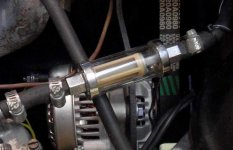
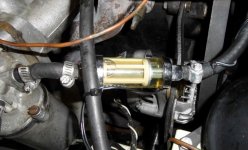
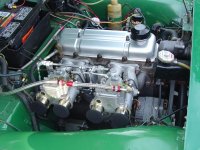
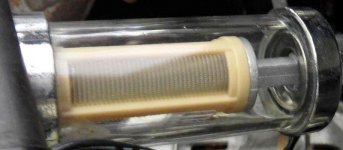
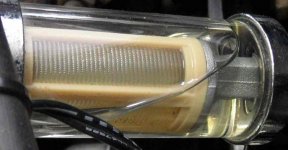
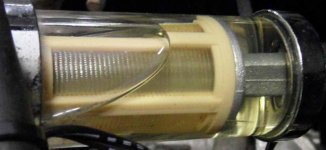
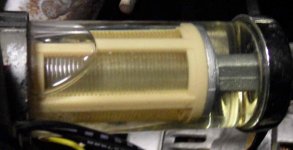
 A friendly reminder - be careful what links you click on here. If a link is posted by someone you don't know, or the URL looks fishy, DON'T CLICK. Spammers sometimes post links that lead to sites that can infect your computer, so be mindful what you click.
A friendly reminder - be careful what links you click on here. If a link is posted by someone you don't know, or the URL looks fishy, DON'T CLICK. Spammers sometimes post links that lead to sites that can infect your computer, so be mindful what you click.